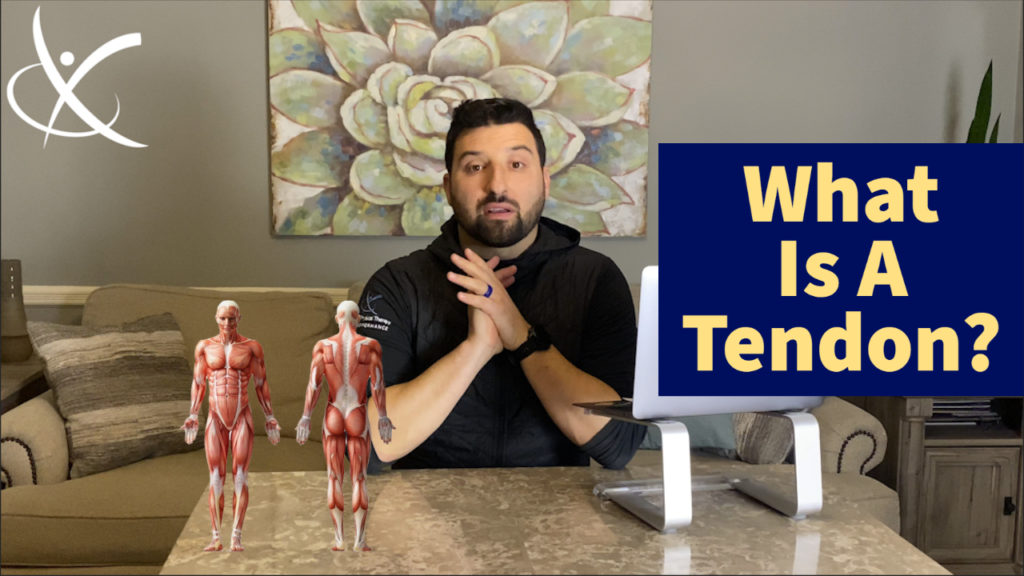What does this Tendon Pain Mean?
We see three common presentations of tendons in the clinic. I’ll explain a bit about the differences shortly, but first, it’s important to highlight the common theme seen in all three: insufficient capacity. What that means is the tolerance for the tendon is too low for the demands being placed on it. Tendons have a job to transmit forces produced by the muscles and different exercises or activities impart different amounts of force on/through the tendon. They certainly let us know when they aren’t up for the task.
This is important because tendons need load to maintain health and capacity. They need to work. Think of it like a working dog. They need a job to do otherwise they act out. OK, maybe not the best analogy. How about learning a language or any other skill? You must continue to practice that language or skill or else you lose your ability to use it. Without sufficient stress or loading, tendons will lose their capacity to do work, and the risk of injury increases in the face of previous activities. Too much rest takes you down this path and can create a nasty cycle of injury.
So without delay, I’d like to discuss three common ways tendon injuries will present in our clinic and what they mean.
1) Acute Inflammation
When a tendon is acutely inflamed there is localized inflammation in the tissue. It is an active inflammation that will present with pain at rest and with activity. We call this a true “tendonitis” because that suffix “itis” denotes an active inflammation.
The priority when dealing with a true inflammation or an acute tendon injury is rest. This may be the only time we suggest inactivity for a tendon. The inflammation needs to be controlled as soon as possible to then start the loading process. As important as it is to load a tendon, it is equally as important to reduce inflammation to make it safe to start the loading process. This process starts with low-level movements to gradually introduce resistance training so the tendon can build back to its previous glory.
2) Reactive
A reactive tendon is teetering right on the edge. It is not actively inflamed but it is not quite up for the job yet. In fact, a reactive tendon may come and go but then “flare up” after you try to resume previous level of activities. Ultimately this shows that the activity exceeds the capacity of the tendon and the overload of that activity will set the symptoms off again.
Individuals with a tendon in this state may find themselves in this vicious cycle of activity → flare up → rest → symptom abatement → activity → flare up…rinse and repeat.
The approach with a reactive tendon is to first remove the offensive activity/activities and then find the appropriate entry point into tendon loading. Think of a bruise. If you want the bruise to heal, you can’t keep poking it. The treatment strategy here is a progressive overload of the tendon up to and including the desired activities but in incremental and methodical steps. The mistake here is people rest and then return to the exact same type of activity that set it off in the first place. It is crucial to take a step back (but only as few as needed) and restart to break the cycle.
3) Recalcitrant
This is one of the more common presentations we see. A recalcitrant tendon issue is one that doesn’t seem to ever truly resolve. It appears “unmanageable” but rest assured it most certainly is manageable. Tendons in this state tend to seem like they are ever-present but still allow you to be high functioning. You can run, you can play sports, you can do things but there may be some pain, or you may find it “barks at you” when you do certain movements. Knee pain while going down stairs, or squatting but goes away almost immediately. Pain while starting an activity or following activity but it “gets better” as you warm up. The pain is there, and the tendon is still compromised, but you still maintain some high level of function albeit with restrictions. You know it’s not perfect and it doesn’t “feel” right.
This is very common and the goal here is immediate loading strategies. Once again, it’s important to find the appropriate entry point into resistance training to load the tendon. Too little load and you’re spinning your wheels in place, and too much load can make things worse. The goal is always to increase capacity and the recalcitrant tendon state is one that needs it immediately. Rest is not prescribed here because there is likely no active inflammation and no emergent issue.
The trick, as stated, is to find the right amount of resistance. Too frequently we find people are under-loading themselves and resting too much with a recalcitrant issue. I’ll put it simply:
Tendons need to be loaded at 85% of your “One Rep Max”
Basically, you have to push some heavy weights. Your effort cannot be easy or moderate. In order to stimulate change in the fibers of the tendon and improve its state, you must push it close to its limits. This can be a daunting task which is why we find people are under-loading and can’t seem to shake the issue. Thank goodness you don’t have to rest though, am I right?
I hope this clears up some of the notions surrounding tendons and paints a clearer picture. It’s common enough for most active individuals to experience some sort of “tendonopathy” at one time or another. Just make sure to pause for a second and see where you might be. This post was meant to serve as a tool to help you parse through the overwhelming amount of information and conventional thinking out there. As always, we’re happy to help.
Happy Loading!
